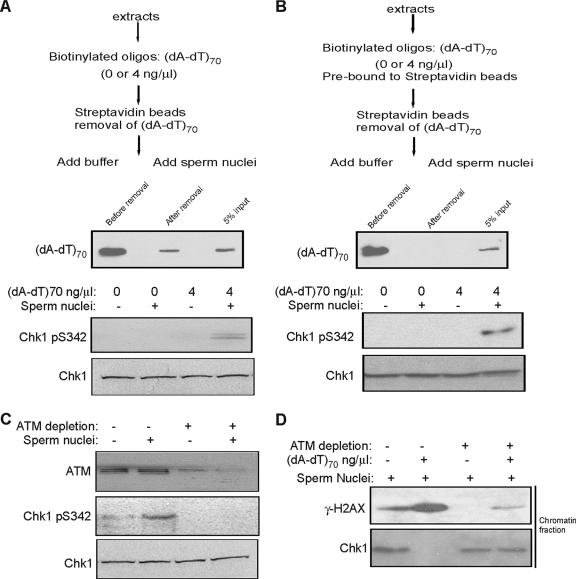FIG. 6.
DNA damage produces a soluble signal that can be transmitted by threshold DNA. (A) Extracts previously supplemented with biotinylated oligonucleotides (dA-dT)70 were then incubated with streptavidin beads to bind the oligonucleotides. Oligonucleotides were then removed by a magnet. The level of (dA-dT)70 in the extract is shown before and after the removal by HRP-streptavidin blotting. The extracts were then supplemented with sperm nuclei as indicated, and immunoblotting was performed using antibodies against Chk1 and phospho-Chk1. (B) As an alternative approach to the procedure of panel A, biotinylated oligonucleotides were first bound to streptavidin beads and then added to extracts, the beads were removed by a magnet, and sperm nuclei were added. The presence of (dA-dT)70 was measured before and after removal by HRP-streptavidin blotting, and the levels of Chk1 and phospho-Chk1 were determined by immunoblotting. (C) Extracts were treated as for panel A, with or without an additional step to deplete ATM. Immunoblotting was performed using antibodies against ATM, Chk1, and phospho-Chk1. (D) Extracts were mock treated or immunodepleted for ATM as for panel C and then supplemented with sperm nuclei and (dA-dT)70 as indicated. Chromatin fractions were reisolated from extracts and immunoblotted for γ-H2AX and Chk1.

